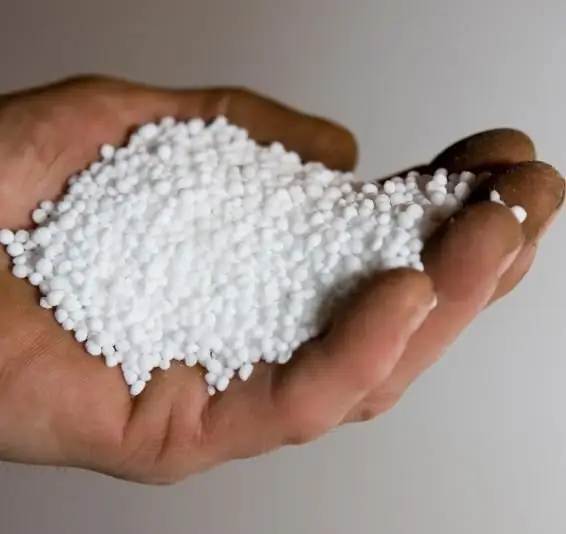Every gardener tries to improve the quality of his crop by applying all sorts of fertilizers. By far the most common is carbamide (urea), which contains organic plant and soil nutrients, and is rich in nitrogen.
A bit of history
Urea was first discovered in 1773 by the French scientist Hillaire Rouelle, but only in 1828 did they begin to produce it synthetically. Effective nitrogen fertilizer urea (urea) in its pure form contains up to 46% nitrogen, when dissolved in water, it is pH-balanced and non-toxic to plants and soil.
Issue form

Carbamide (urea) comes in various forms:
- In the form of small granules that slowly dissolve in the soil and protect it from oversaturation with nitrogen. It is easy to mix this fertilizer with others, including organic ones.
- In the form of long-dissolving tablets, coated with a special coating that prevents rapid dissolution in the soil, which protects the crop and soil from nitration.
Urea: application
Field experiments show that the applicationurea as a pre-sowing fertilizer is permissible on absolutely all types of soils and under all kinds of crops.

At the same time, the effectiveness of the product is not inferior to ammonium nitrate and ammonium sulfate, and sometimes, for example, on sod-podzolic soils with sufficient moisture and irrigated gray soils, it provides a richer harvest of potatoes and vegetable crops. It is used both for top dressing of winter crops in early spring, and for row crops and vegetables with immediate sowing to prevent nitrogen losses due to the evaporation of ammonia formed during fertilizer decomposition. For foliar feeding of plants, it is recommended to use a crystalline version with a biuret content of up to 0.2-0.3%.
Benefits
This nitrogen fertilizer has advantages over other fertilizers. Carbamide (urea) is well absorbed by crops, and at a high concentration (1% solution) it does not kill the plant and does not burn its leaves.

When decomposed, it is absorbed by leaf cells in the form of whole molecules, and can also be absorbed when decomposed by the action of the urease enzyme with the formation of ammonia or diamino acids in the cycle of transformations of nitrogenous substances. However, an excess of free ammonia in the root zone slows down germination and emergence of seedlings, so you need to be extremely rational when applying carbamide to the soil during sowing, or distribute it evenly.
Recommendations
Before adding urea to the soil, it is recommended to mix thoroughlyit with other additives or with dry sand. When used correctly, granulated urea (urea) is an excellent nitrogenous fertilizer. All this is due to good physical properties, as well as a high nitrogen content in its composition. Since it can be used on any soil, and it has a positive effect on crop growth, the need for this universal fertilizer is growing every season, and, as a result, its production is increasing.






